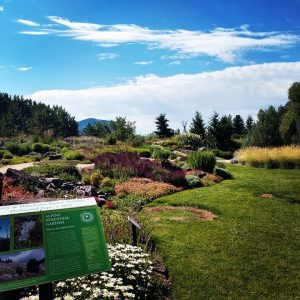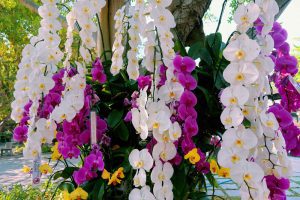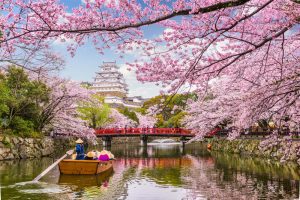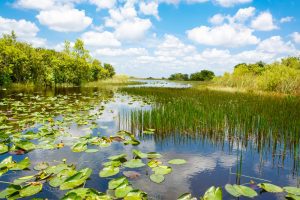Some of the most beautiful Japanese flowers are tied to different traditions. Several flowers are even considered sacred.
But most flowers from Japan are simply grown because they look great and because they can also smell heavenly.
If you’re considering Japanese plants for your home or garden, there are hundreds to choose from that can be grown around the world. The following Japanese flowers are ready to be used as decoration in your home.
Table of Contents
10. Kinmoukusei
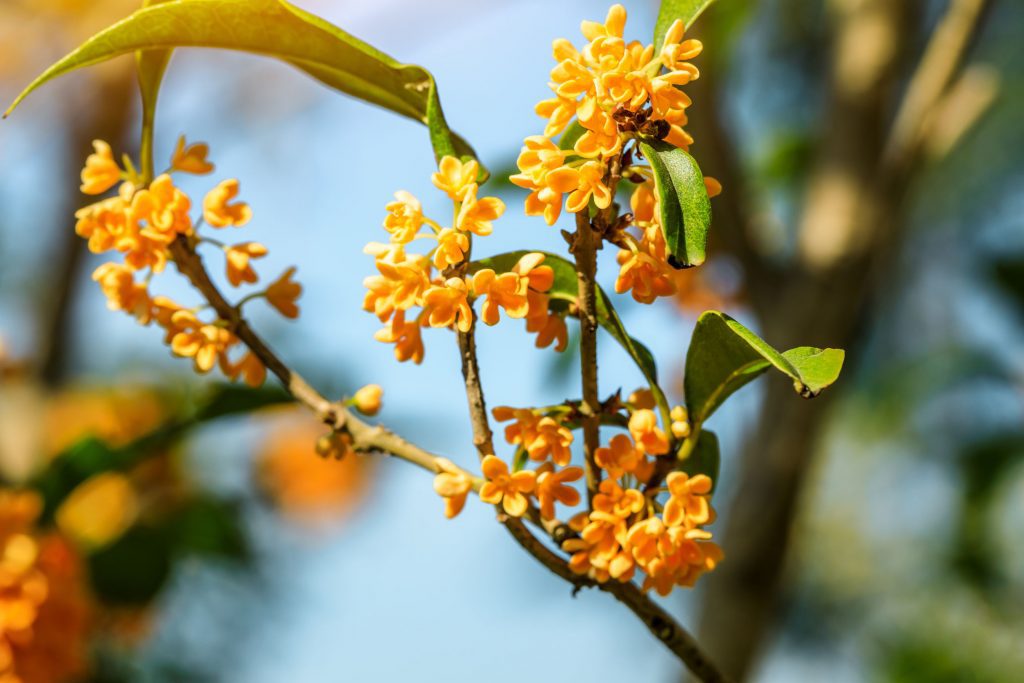
The Orange Osmanthus flower, also known as Kinmoukusei, is a distinct seasonal flower you can mostly see in Japan’s gardens. If you want to see its full beauty you’ll need to watch it bloom in early autumn.
This plant is characterized by vivid orange flowers that can be used as decoration. For the rest of the year when not in blossom, the flower is mostly dark green. Its evergreen shrubs make it perfect for temperate climates and areas where the sun is not shining through the year, mostly like Japan.
9. Akai Bara
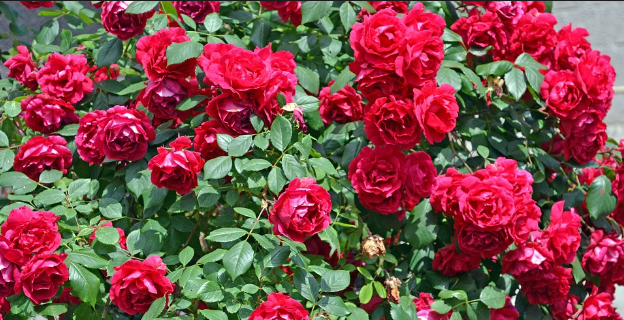
The red rose of Japan is the flower of passion. Akaibara is grown in gardens and it’s also offered as a romantic flower. Since there are thousands of red roses around the world, you need to ensure you are purchasing Akaibara if you want it in your garden.
If you’re visiting Japan you can learn a few tricks on how to grow Akaibara properly. However, Hakone Gora Park is where you will find the red rose in all its glory and versions. The national park can be visited for a very small entrance fee.
8. Ajisai
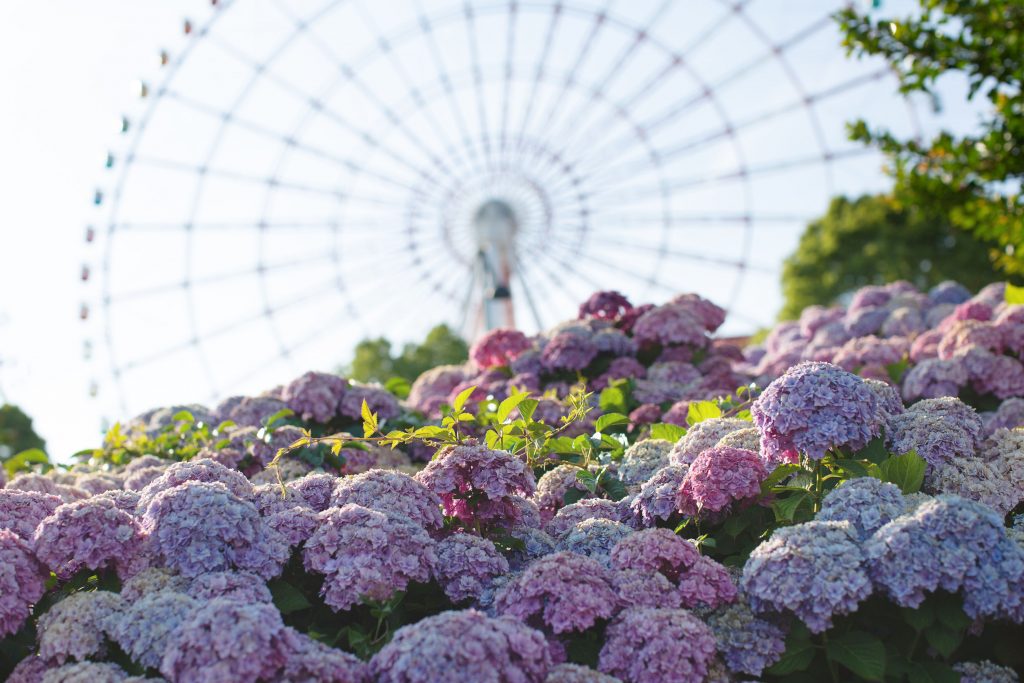
Part of the Hydrangea family, the flower has changing colors. Unlike the red roses above, it features multi-colored petals that look distinct on their own, even if the flower is used to create unique gardens.
In Japanese culture, the flowers are mostly offered to someone you are apologizing to or to a person you care about. It’s not uncommon for it to be solely used for decoration only either. This flower blossoms early in the spring as well as in autumn. The best place to see it in Japan is in the wilderness of the Nabana No Sato Park.
7. Kiku
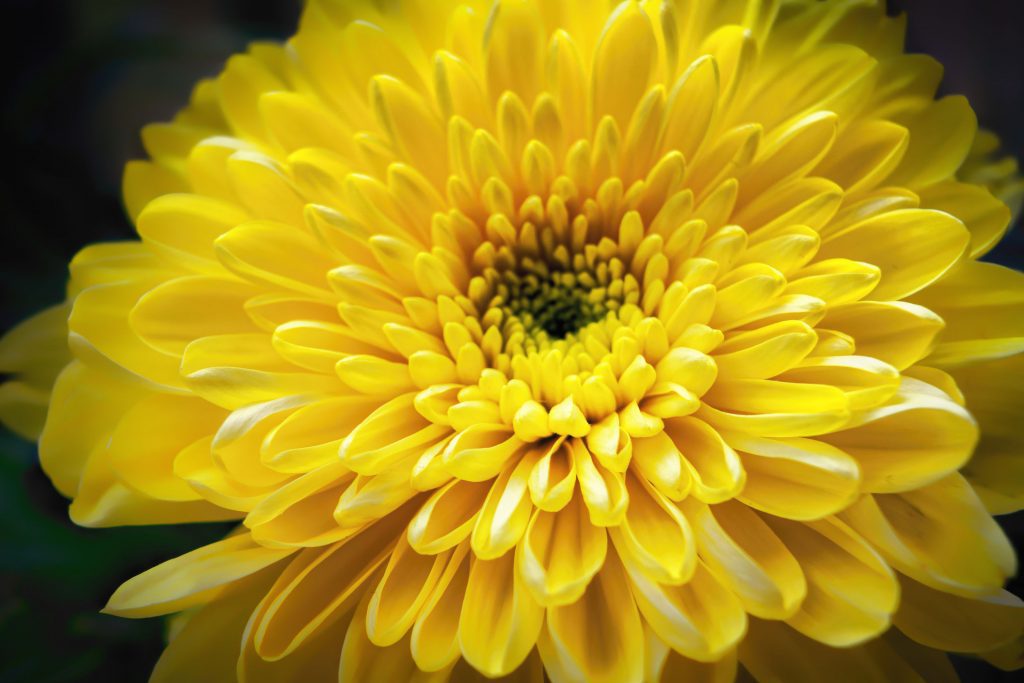
Kiku or Chrysanthemum is a flower that grows around the world. Its Japanese version originates in China and you can find it in various colors such as white, yellow, and even pink.
The flower is normally associated with everything noble. If you have an upscale event, it could be the flower to decorate it. If you want to elevate the charm of your garden and make it look a bit royal, Kiku is the Japanese flower to consider.
6. Asagao
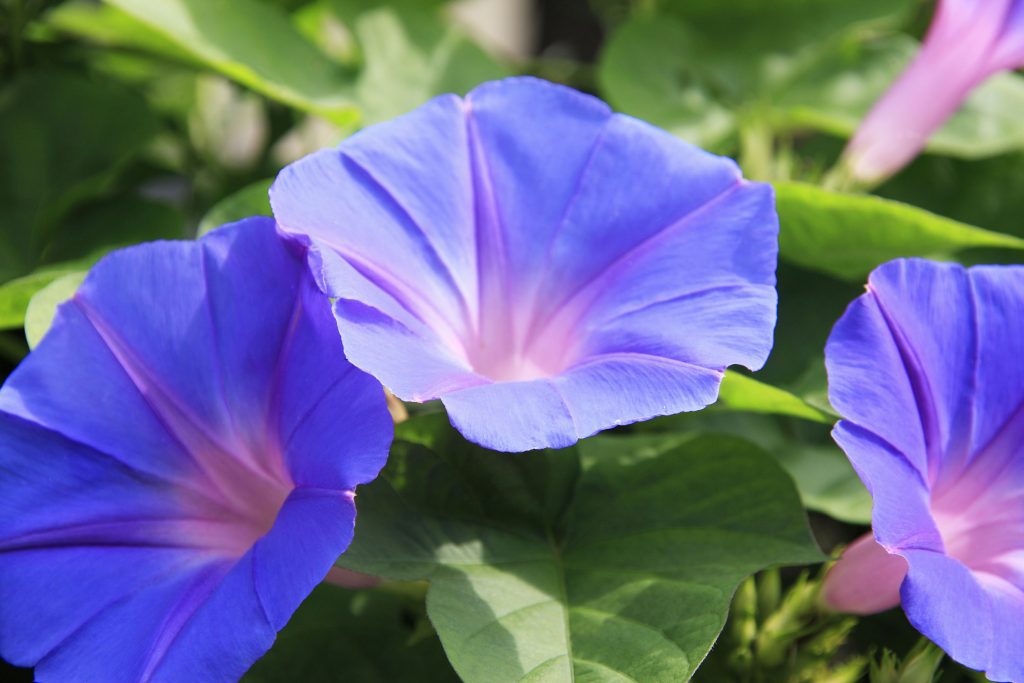
Asagao is also known as Morning Glory. It loves to blossom early in the morning when the temperatures are still cool as it’s not the type of plant to love direct sunlight and high heart.
Its tinted blue petals make it an almost unmistakable plant even if you’re not into flowers. While you might see it in European or North American gardens, you can appreciate it in all its glory in the Osaka region of Japan.
5. Tsubaki
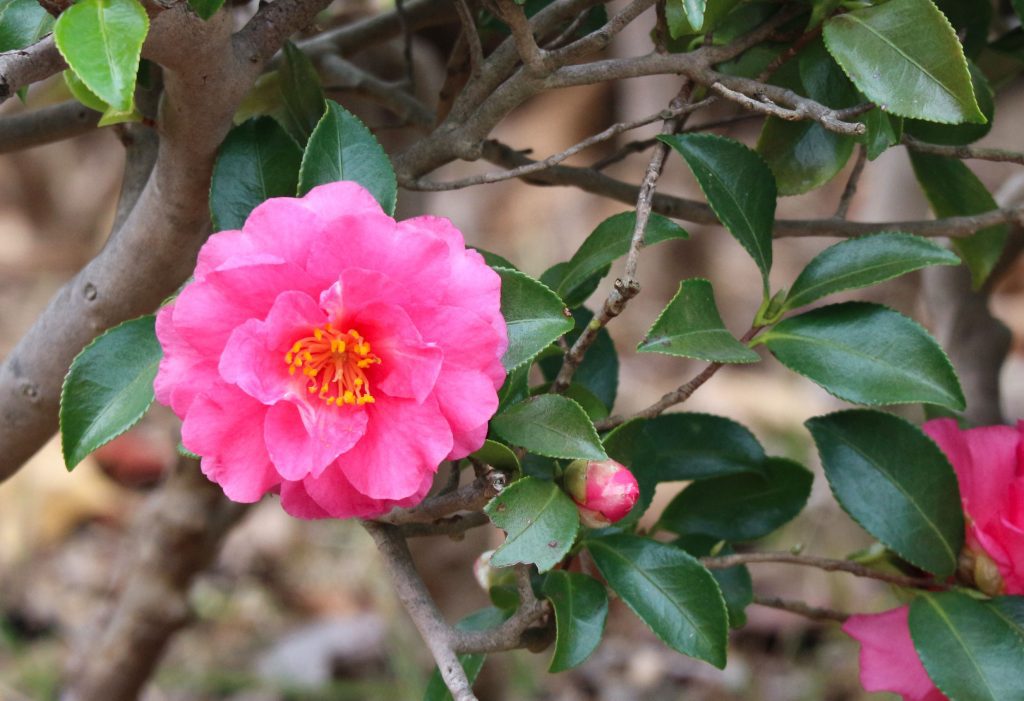
The camellia flower known as Tsubaki is one of the decorative plants used to create complex Japanese traditional gardens. With green shrubs and bright red petals, the plant is often tied to humility and discretion.
As a result, you can consider Tsubaki flowers for your garden if you don’t want it to attract too much attention. It works perfectly with other discreet flowers and blossoms such as cherry blossoms.
4. Momo
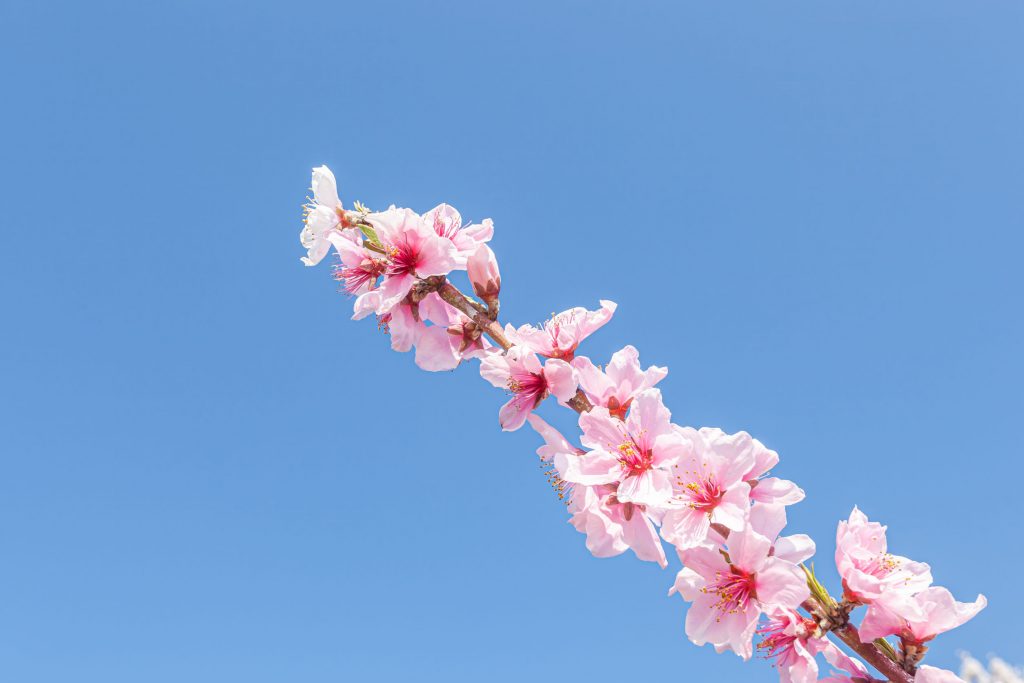
Momo or the flowers growing from the buds of the peach tree also look slightly pink, similar to cherry blossoms. They cover the peach tree entirely and they are often tied to delicate gardens where you want to indicate passion or fascination towards nature.
Koga Park is an area where you can see thousands of momo flowers each year. Alternatively, you might even see them in the Alps when you’re traveling to Europe as momo has been successfully acclimatized.
3. Ume
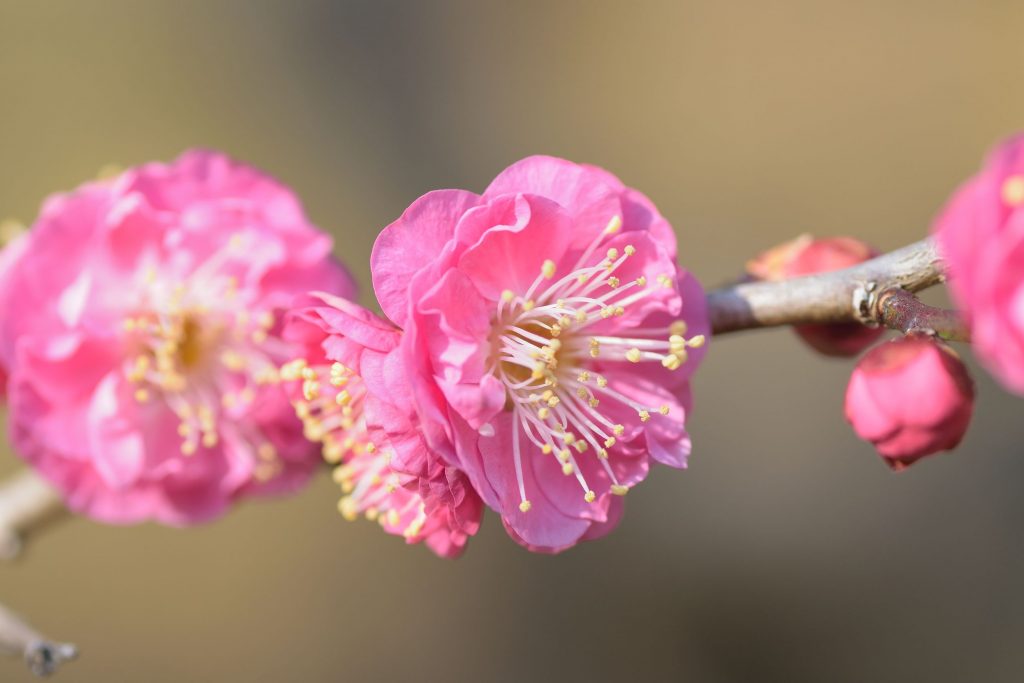
The ume flower is known as the base for the umeshu traditional Japanese liquor. The ume tree has an interesting history in itself. An official Japanese delegation to China brought this flower to the country and since then, it has been incorporated in the area’s culture. Some people even eat its flowers, similarly to the edible momo flowers.
Much like other Japanese flowers, you can recognize Ume by its white-pink petals that grow on tree branches. These flowers are typically smaller than cherry blossom so you shouldn’t have any issue confusing these traditional Japanese plants.
2. Himawari
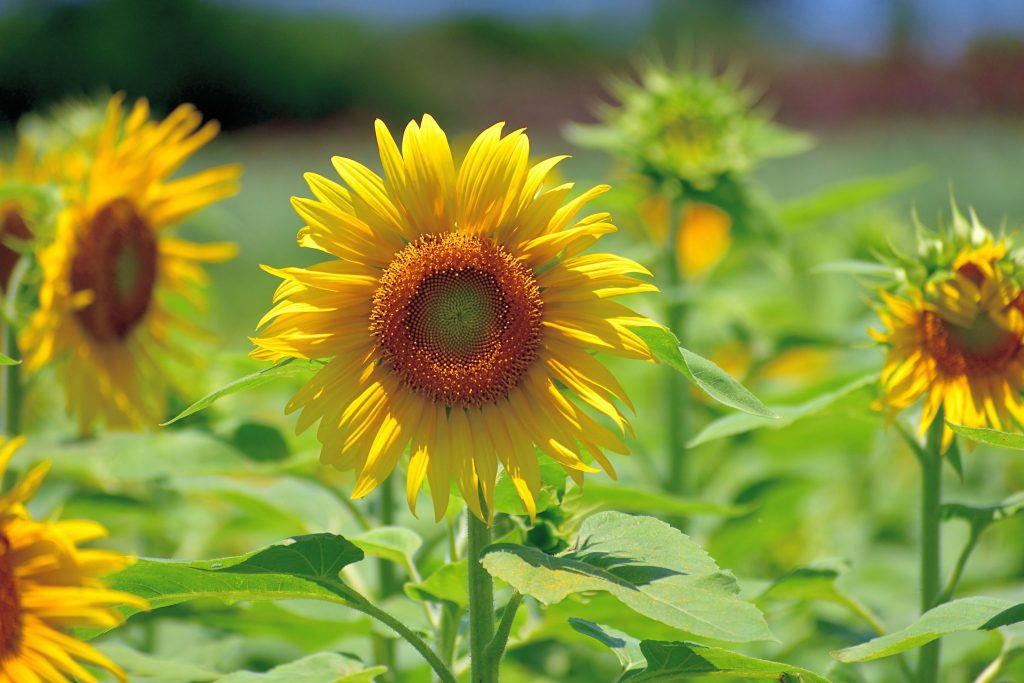
Himawari or the Japanese sunflower is distinguished by its bright yellow profile. It typically grows in vast Himawari crops and all of these thousands of plants create a yellow sea which is normally visible from miles away.
The plant resembles other species of sunflower but it is distinct, even to those who’re not familiar with it. In Japan, Himawari is associated with feelings of loyalty, even if it is not a flower which you normally offer your significant other.
If you’re truly passionate about sunflowers, you can’t miss its dedicated festival of Himawari Matsuri which takes place every year between August 10 and August 14th in Zama. Albeit there’s not much going on around during the festival, thousands of locals gather to take pictures with sunflower fields.
1. Sakura
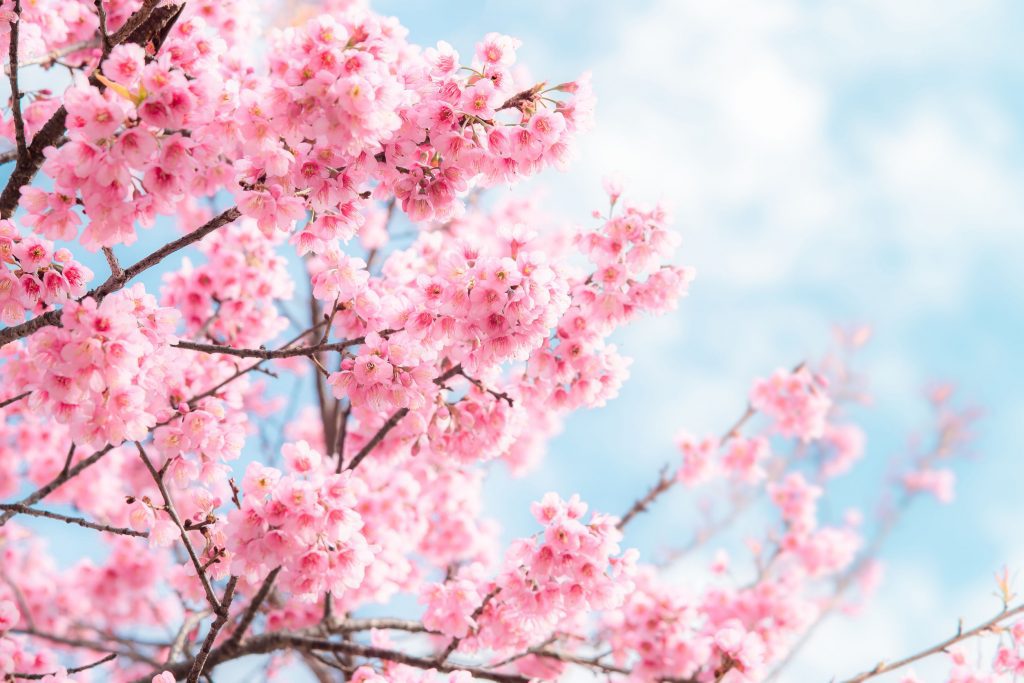
Sakura or cherry blossoms are considered the national flower of Japan. You know it from the thousands of Japanese postcards and you will find it all across the country when visiting.
Multiple Sakura flowers can grow on a single cherry tree branch. When fully blossomed in the spring, these flowers cover the tree completely. You can distinguish the flowers from others with the distinct pale pink color with just a few green leaves. Prunus serrulata or sakura is normally used to decorate Japan’s parks as the blossoms offer a rare spectacle even if you can also see it in Brazil as well as in Australia in areas where you can find large Japanese communities.






